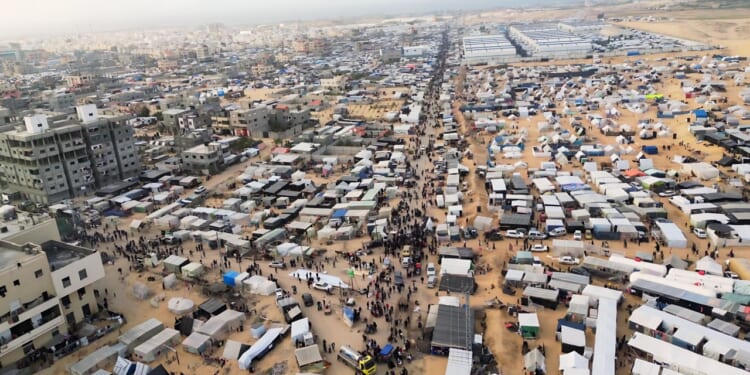A multinational peacekeeping force will be severely tested by the current conditions in Gaza.
Arranging an International Gaza Peacekeeping force is a crucial step in the next phases of the peace plan agreed to on October 8. The White House appears to be committed to implementing its terms. This week, Vice President JD Vance, Special Envoy Steve Witkoff, and Trump family associate Jared Kushner visited Israel to ensure the ceasefire holds. Secretary of State Marco Rubio also arrived on a separate trip to deliver the same message.
Maintaining the ceasefire is essential to add momentum to discussions for building a peacekeeping force. Reports indicate that several countries may be interested in playing various roles. These include Egypt, Turkey, Azerbaijan, Indonesia, Pakistan, and some of the Gulf states. What matters now is not so much which countries have shown interest, but what concrete steps they will all take. Most would be cautious and reluctant to commit if they think the peace plan is falling apart.
Another bridge to cross: how many peacekeepers will deploy to Gaza? An Al-Arabiya report speculated that a 4,000-person force was possible. Some of the countries, like Pakistan, have experience deploying troops abroad either directly or as part of international coalitions or UN Peacekeeping missions. Nonetheless, international peacekeepers always face tough hurdles.
For instance, the UN role in Somalia in the 1990s could not prevent the outbreak of the infamous Battle of Mogadishu (of Black Hawk Down fame), in which US forces fought Somali militias. In southern Lebanon, the UN deployment has failed to accomplish its mission and keep Hezbollah disarmed or keep the peace. The list of other failures of international forces, from Haiti to the Congo, is very long. That doesn’t mean there are no successes; the NATO-led international peacekeeping force in Kosovo is one success story whose lessons could help Gaza.
Gaza is currently divided into two zones. The IDF controls around 50 percent of the Strip, and Hamas appears to control the rest. There are also some Israeli-backed militias contending for control. Hamas seeks to demonstrate that it still holds power over the 2 million civilians in Gaza. However, it appears to be stepping back from the brutal executions it carried out in the days following the ceasefire.
The IDF-controlled area of Gaza may provide a beachhead to prepare an international force for the task of pacifying the Hamas-controlled zone. In addition, it might provide opportunities for investment and infrastructure development. This will be necessary for the international force to build capacity, rapport, and trust with civilians.
Some countries, such as Egypt and Qatar, have long experience in Gaza. Others, such as Indonesia, have supported humanitarian aid. It remains to be seen what role Turkey might play. Ankara has hosted Hamas and provided it with rhetorical support in the past. Jerusalem is skeptical that Ankara can play a positive role on the ground. However, Ankara’s experience with providing humanitarian aid in Syria and development in the autonomous Kurdistan Region of Northern Iraq might be helpful in non-military roles.
The big question will come when the peacekeeping force enters Hamas-controlled neighborhoods. Can a multinational force remove Hamas and establish a new technocratic government? This will be necessary to create a peaceful future for Gaza.
There are examples of how this could work. In Mosul, the US-led international coalition backed the Iraqi army to rid the city of ISIS in 2017. Today, Mosul is a thriving city. Gaza could follow the Mosul model. However, this will take time and require the United States to keep the partner countries together and focused on the mission.
About the Author: Seth Frantzman
Seth Frantzman is the author of Drone Wars: Pioneers, Killing Machines, Artificial Intelligence and the Battle for the Future (Bombardier 2021) and an adjunct fellow at The Foundation for Defense of Democracies. He is the acting news editor and senior Middle East correspondent and analyst at The Jerusalem Post. Seth has researched and covered conflict and developments in the Middle East since 2005 with a focus on the war on ISIS, Iranian proxies, and Israeli defense policy. He covers Israeli defense industry developments for Breaking Defense and previously was Defense News’ correspondent in Israel. Follow him on X: @sfrantzman.
Image: Gaza Survival Journey / Shutterstock.com.

















